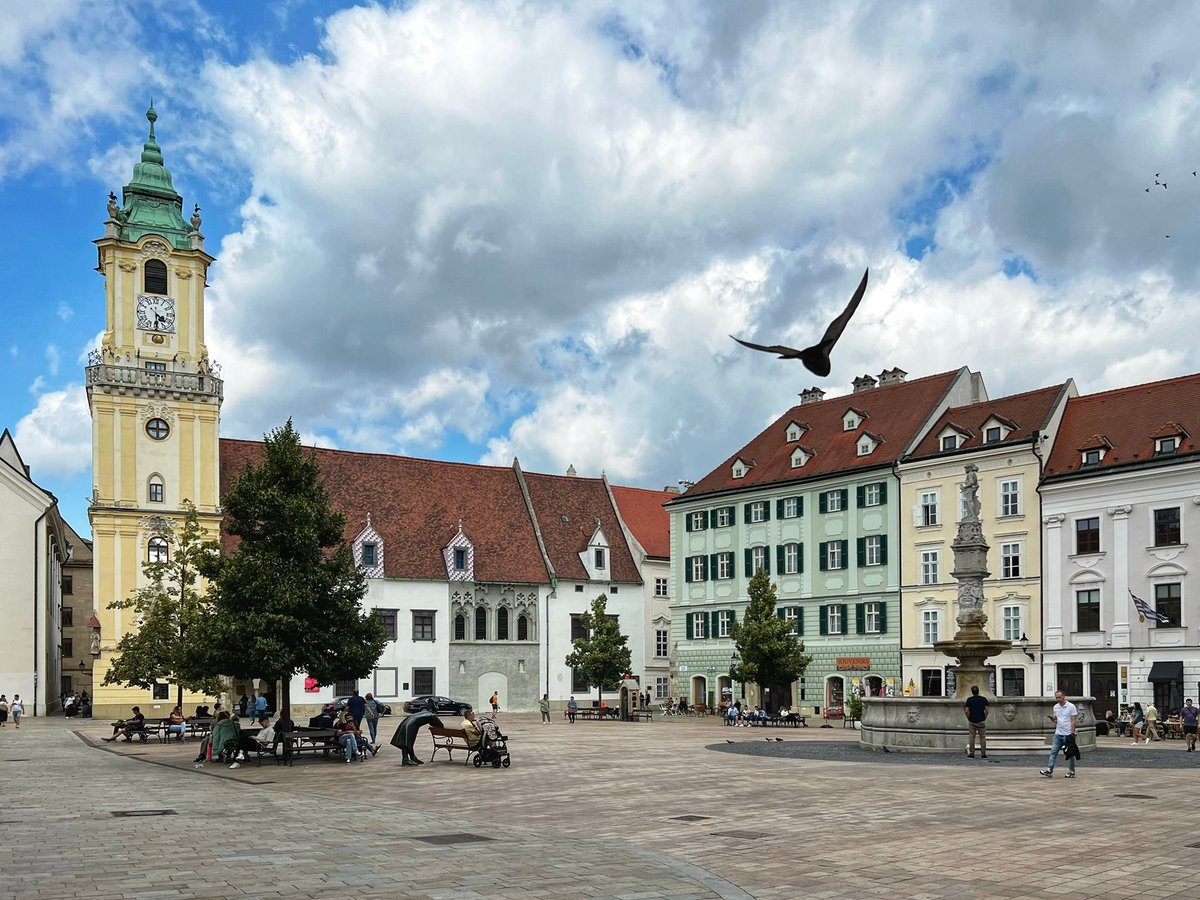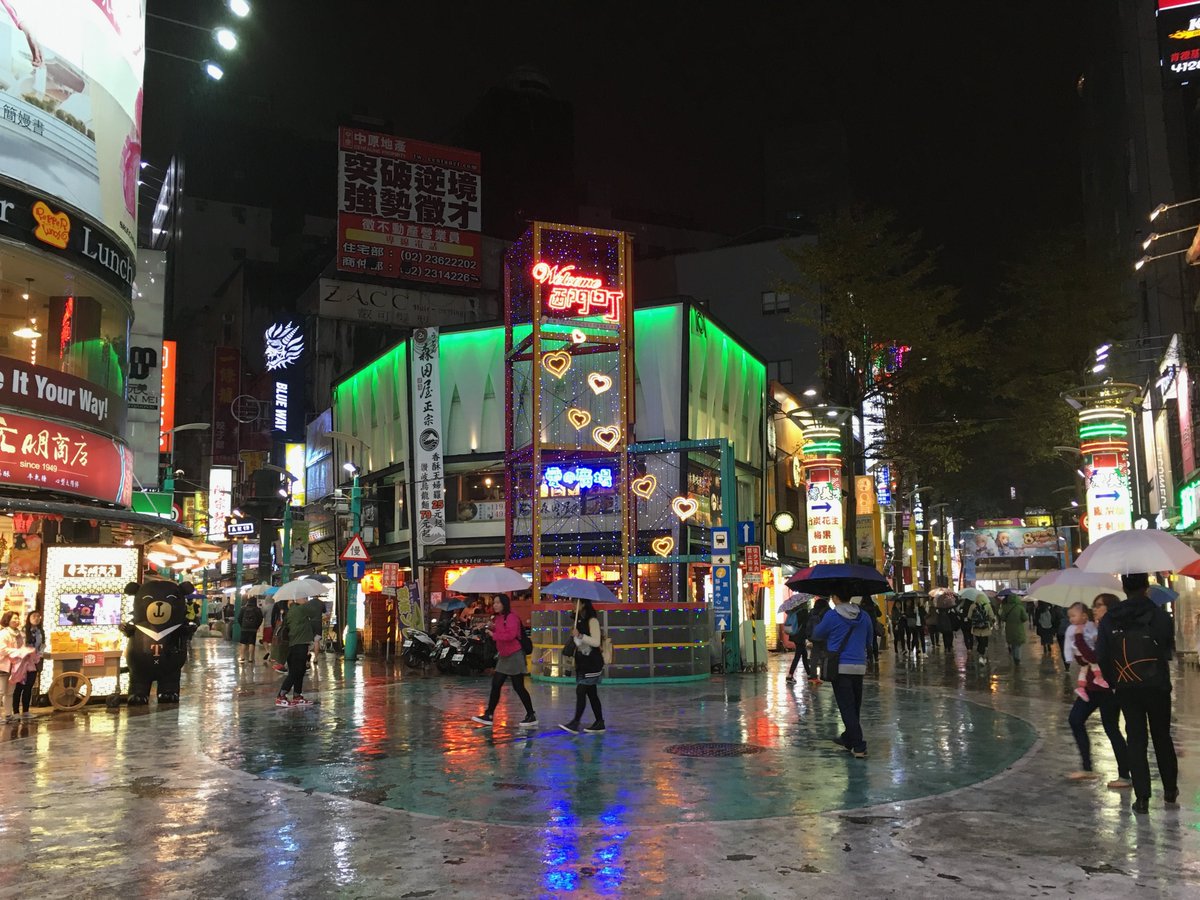#30 KARL JOHANS GATE OSLO. This is a pretty standard central commercial pedestrian zone like you see across Europe. It would be great if this was standard across America too. 





Looking back at my photos from Santa Cruz makes me wonder if I ranked it too low...but there are some other good ones coming up. 







#28 SONNWENDVIERTEL VIENNA. This one gets credit for being completely new. It's one thing to pedestrianize a medieval labyrinth of alleyways but quite another to have the option of adding cars and saying "nah."
https://twitter.com/Qagggy/status/1546596641636880384?s=20&t=pqpiFbb-4xvwb41UzynmRg
At this point, you might note overlap with my thread of Top 20 New Urban Districts. I believe there are only two places on both lists. Not all pedestrian zones are new and—unfortunately—not all new urban districts are pedestrianized.
https://twitter.com/Qagggy/status/1614318351844806656?s=20&t=pqpiFbb-4xvwb41UzynmRg
#27 XIMEN TAIPEI. Ximending Pedestrian Area was the first built in Taipei and is the largest in Taiwan. It is especially lively at night. 



In Ximen, there is a new delicacy around every corner. I very happily stood under an umbrella eating a rain-soaked wrap of some sort containing cheese sauce from this giant vat. 

Asian pedestrian zones are going to be underrepresented in this thread for one primary reason: it's been tough to travel there lately due to covid. Perhaps someone in that part of the world could supplement my thread.
https://twitter.com/QAGreenways/status/1193929395800403968?s=20
#26 DE WALLEN AMSTERDAM. Known to many as Amsterdam's Red Light District, De Wallen is changing under the leadership of Mayor Femke Halsema, who is seeking to improve working conditions and address human rights abuses. 







Alrighty. It looks like I'm committed to doing this thread. It might take a few days.
#25 INNERE STADT/STEPHANSPLATZ VIENNA. Another classic European commercial pedestrian zone, growing gradually. 







#24 EINDHOVEN CENTRUM. This place took some time to grow on me. With a few exceptions, the architecture is fairly drab but it's a lively place on a sunny afternoon. 





Eindhoven was traditionally one of the more car-focused Dutch cities but it has made great progress recently putting people at the center of urban design. 

#23 ’S-HERTOGENBOSCH CENTRUM.
https://twitter.com/Qagggy/status/1603522395297701893?s=20&t=VcN1aLdhJu2kgPWmDOP7XQ
#22 STADSDRIEHOEK ROTTERDAM's pedestrian zone is built on a grand scale. Possibly too grand...but I'll let you be the judge. 





The centerpiece of Rotterdam's central pedestrian zone is the Markthal, which is incredible.
https://twitter.com/Qagggy/status/1199467718656704512?s=20&t=VqxUGiZBguIIUbf9yeKwvA
#21 SEESTADT VIENNA is the other place that appears on both of my recent countdowns. There are a ton of great pedestrian spaces here!
https://twitter.com/Qagggy/status/1549158085578465280?s=20&t=VqxUGiZBguIIUbf9yeKwvA
All of those pedestrian spaces make Seestadt an exceptionally safe place for kids to be kids.
https://twitter.com/Qagggy/status/1535595051367079936?s=20&t=VqxUGiZBguIIUbf9yeKwvA
Ok, by now you're probably thinking those first ten pedestrian zones are pretty great but...there are 20 more that are even better?
#20 VREDENBURG/BINNENSTAD UTRECHT.
https://twitter.com/Qagggy/status/1296119355269238784?s=20&t=BCUzORMju8Sz-c-nVbmMaQ
Sure sign of a successful pedestrian street: people want to just sit and look at it.
https://twitter.com/Qagggy/status/1196911375462756352?s=20&t=BCUzORMju8Sz-c-nVbmMaQ
#19 BURGWALLEN NIEUWE ZIJDE AMSTERDAM. While Amsterdam has a number of pedestrian streets and zones, I give extra points for being new. The current redevelopment around Spui sets an excellent example. 





Editorial note: For this list, I'm excluding isolated pedestrian streets, even quite lovely ones like Calle de Asunción. For my purposes, a zone is a network of connected, public, pedestrian streets.
https://twitter.com/Qagggy/status/1466098102855602183?s=20&t=XCkSnHGDBWLQNblYdFQrhQ
I'm also excluding zones that are only closed to private cars part-time. So, that means super cool places like Hanoi's Old Quarter weren't included. 





Ok, back to the list and wow...#18 BARRI GÒTIC BARCELONA is a stunner.
https://twitter.com/Qagggy/status/1467878858842001412?s=20&t=iIeCn2H80hm8hKzD5GYZ_w
Barcelona's Gothic Quarter had a few centuries to prove it could manage without cars and it still has a substantial pedestrian zone today. 





There comes a point where getting in a car and driving around starts to feel like an unnatural way to navigate a city. 

I'm assembling this thread on the fly—sort of like livetweeting my camera roll—so it might take another day or so. I'm almost halfway there!
#17 PATERSHOL GHENT. Instead of letting cars pass straight through town on their way to someplace else, Ghent said "How about we make cars go around?" The result is a safe and peaceful city center. 





Learn more about Ghent's traffic circulation plan here. simagazin.com/en/si-urban-en…
This is probably a good moment to note that pedestrian streets can, and very often do, include transit. 

#16 GRANDE-ÎLE STRASBOURG. Speaking of which...Strasbourg, France.
https://twitter.com/Qagggy/status/1373006559412776960?s=20&t=9NP39r9InkPpvUi2ghAcIw
WE ARE HALFWAY THROUGH.
#15 LES HALLES PARIS. This is another situation where I give extra credit for newness. Paris is on a roll and one part of that is the growing pedestrian area around Les Halles. 

#14 BINNENSTAD/SINT-MICHIELSPLEIN GHENT. We're going back to Ghent! This is the main pedestrian zone in the city center. 





Some parts of Ghent's main pedestrian zone are quite bustling, some peaceful, and some in-between. It is a great mix of public spaces. 





#13 EL CENTRO CARTAGENA. I was on the fence about including Cartagena, Colombia because the closure to cars can be weak at times (wooden barricades), but it is, on balance, a pedestrian-dominated zone. 





#12 HAARLEM CENTRUM.
https://twitter.com/Qagggy/status/1562195207172395010?s=20&t=mceyRXGi2E97BNrhsufvKw
Haarlem seems like a good place to be a kid.
https://twitter.com/Qagggy/status/1541806669834858496?s=20&t=mceyRXGi2E97BNrhsufvKw
One final plea, with a Madrilenian example.
https://twitter.com/Qagggy/status/1464724165366276102?s=20&t=bwBMvvP5De_grlk38xQkUA
Alrighty, so those were the bottom 20. Are we ready for the top 10?
#10 BINNENSTAD DELFT.
https://twitter.com/Qagggy/status/1194286242411638784?s=20&t=bwBMvvP5De_grlk38xQkUA
I have a bunch of Dutch pedestrian zones on my list but Delft is the one that breaks the top ten.
https://twitter.com/Qagggy/status/1165956573220560896?s=20&t=bwBMvvP5De_grlk38xQkUA
#9 TJUVHOLMEN/AKER BRYGGE OSLO. As I mentioned earlier, I give extra credit for new pedestrian zones and this one is fresh as morning dew. 

Oslo shows that you can remove a highway along the waterfront and replace it with a lively pedestrian zone. 

#8 EL BORN BARCELONA. I know there are one or two policymakers reading this thread and I want you to know that lively, healthy, prosperous, equitable cities are a product of leadership, not luck. 



El Born, Barcelona.
https://twitter.com/Qagggy/status/1462444537398317066?s=20&t=8F2Vo5lxKMwGOVDK82EbtA
Located adjacent to Barri Gòtic, Barcelona's El Born neighborhood is a lush network of pedestrian streets and squares. 







One last snapshot.
https://twitter.com/Qagggy/status/1464842632425881600?s=20
Copenhagen's Strøget is the O.G. pedestrian zone, the one that inspired all of the others. I had an early iPhone and an underdeveloped sense of composition when I took this trip so the photography isn't quite as inspiring. 







It was a thrill for me to meet Jan Gehl—the urban planner most associated with Strøget—last year. He was game for a #shoepic. 

#5 CASCO ANTIGUO SEVILLE.
https://twitter.com/Qagggy/status/1463494828025597956?s=20&t=8F2Vo5lxKMwGOVDK82EbtA
I don't think there is anything unique about Seville but the people of that city decided (fairly recently) that they wanted fewer cars and now they are reaping the benefits. 





#4 STARE MESTO BRATISLAVA.
https://twitter.com/Qagggy/status/1582138988043071488?s=20
Ok, the top three are coming up! I just need to get some sleep.
#3 CENTRAL ZAGREB.
https://twitter.com/Qagggy/status/1538215964734529536?s=20
Zagreb's pedestrian zone is great already but it's getting even bigger.
https://twitter.com/Qagggy/status/1538575430017507330?s=20
Not even steep hills can stop Zagreb's pedestrian zone. It keeps going in this network of caves.
https://twitter.com/Qagggy/status/1538196049612918786?s=20
#2 PENTAGONE/ANSPACH BRUSSELS.
https://twitter.com/Qagggy/status/1534848461668904961?s=20
Regular followers of this account will be familiar with the rapid transformation happening in the center of Brussels.
https://twitter.com/Qagggy/status/1512872664083230721?s=20
Brussels is a great example for American cities because it's a place with highrise buildings and car-choked arterials that decided they could do better.
https://twitter.com/Qagggy/status/1535231119452278785?s=20
What Brussels is doing is what every city needs to do.
https://twitter.com/Qagggy/status/1164247378431549442?s=20
#1 PREŠEREN SQUARE/CENTER DISTRICT LJUBLJANA.
https://twitter.com/Qagggy/status/1547827756938891269?s=20
Putting Ljubljana at number one was a no-brainer for me. It's the best-executed pedestrian zone I've seen. 





• • •
Missing some Tweet in this thread? You can try to
force a refresh







































































































